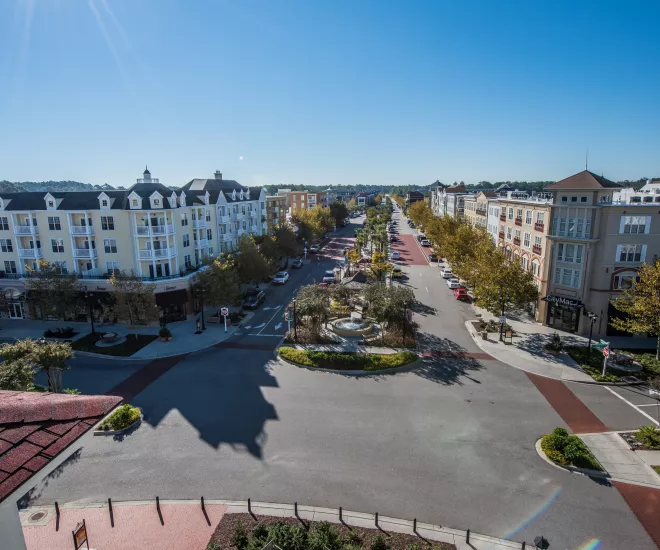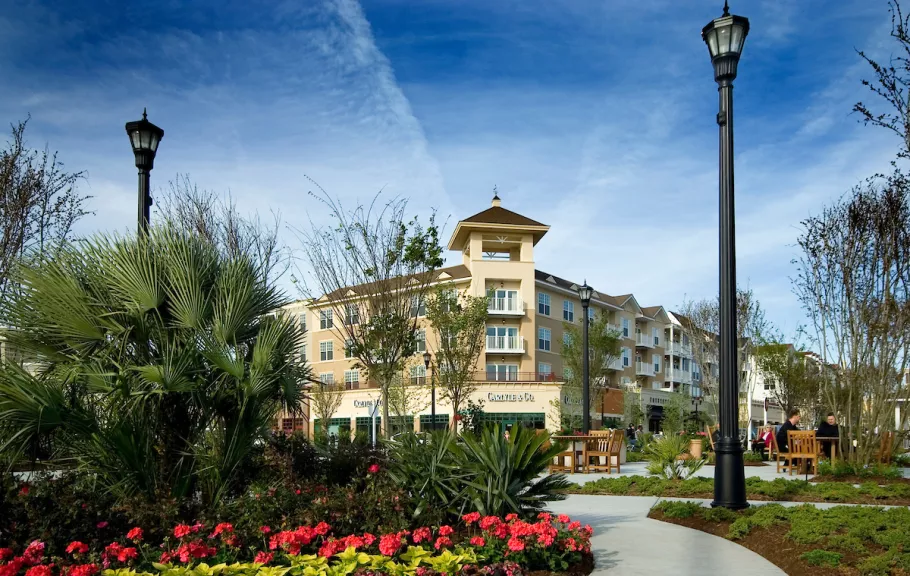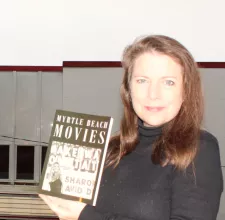The History of the Myrtle Beach Air Force Base’s Transformation

One of the most influential veterans in the Myrtle Beach Air Force Base’s history is one who was never stationed there, but it wasn’t from a lack of wanting to be. Retired Colonel Buddy Styers moved with his family to Myrtle Beach in the early 1950s, when he was a boy.
His dad had left his position with the railroad to embark on a new venture, operating a motel, The Smith Motor Court. It’s still here today under the name of the Ocean West Motel, on North Kings Highway, not too far from the Swamp Fox roller coaster.
Buddy enjoyed growing up at the beach. He graduated from Myrtle Beach High School in 1959, and eventually met his wife of nearly six decades, Penny, upstairs at the Pavilion. Perhaps influenced by the base just down the road that had opened in 1956, with its sleek F-100 Super Sabers dashing across the sky where he lived, Buddy joined the Air Force.
He had a stellar 26-year career during which he and his family lived all over the country, and he commanded more than one air base. But his one regret was that he was never assigned to Myrtle Beach. He retired in 1992, thinking that his professional history and that of the base here would never intertwine. Little did he know what his future held.
On March 31, 1993, the Air Force base closed. In the meanwhile, Buddy had returned to Myrtle Beach and worked for a couple of local corporations, but found his true calling in 1995, when he took the helm of the Myrtle Beach Air Force Base Redevelopment Authority. He led the charge to transform a former base into one of the most thriving and exciting areas of Myrtle Beach. In 2019, he received on behalf of the Authority a prestigious award from the EPA, the United States’ Environmental Protection Agency, for their work.
It has been a Herculean task. And Buddy will be the first to tell you that he really didn’t know what he was getting into. He took on-the-job-training to the next level.
In the first year after the base’s closure, the federal government had returned the land to the City of Myrtle Beach, but the airport was run by the county. Trying to sort out the details between the two local governments proved so problematic that the state put a neutral party, Santee Cooper, our power utility in charge of negotiations, but that didn’t work out either. Finally, the South Carolina General Assembly established the Authority in the summer of 1994, and Buddy Styers became its only Executive Director the following year.
He had a lot of entities to please with a track record of only displeasure preceding him. There were also limited Department of Defense (DOD) funds allocated to the project. In addition, there had been some misleading development proposals presented. The wildest rumor that I recall was that Michael Jackson wanted to open an amusement park on the property. He didn’t. Allegedly, a developer just wanted to tie up the property in order to subdivide it into residential neighborhoods.
By the time Buddy took over, the city had paid for a development plan to be drawn up. As it was already paid for and seemed to reflect what the public wanted, Buddy adopted it. It served as the basis of the Market Common District we know today. But even with a plan in place, the way was not easy. Buddy readily shares that everywhere we needed a building there wasn’t one and everywhere we didn’t need a building there was one. The best example of this is today’s Grand Lake. It wasn’t the beautiful water feature that we know now. During the base’s time, that was where all the dormitories were.
But things really didn’t start falling into place until Buddy Styers met Dan McCaffery. He had a lovely, upscale live/work development in Arlington, Virginia, called Market Common. He also had a personal relationship with the CEOs of some of the major retailers and restaurant chains found in the best commercial locations. When Buddy showed him what Myrtle Beach had to offer, Dan was inspired. Together, with legions of others, they formulated what would become Myrtle Beach’s The Market Common (TMC).

You might notice that the website address for our TMC is marketcommonmb.com. It’s a subtle reminder that there is another Market Common. Another fun fact is that the original logo for our TMC was to have been a yellow hibiscus bloom. It was Penny Styers who suggested that it be pink instead.
Mrs. McCaffery unwittingly made her mark on TMC as well. As Executive Director, it was Buddy Styers’ job to submit names to the City of Myrtle Beach for all of the new streets that were being cut. As a token gesture of appreciation, he submitted Iris Street, for Iris McCaffery, that runs between Farrow Parkway and Howard Avenue. At the opening day festivities in April of 2008, Buddy surprised the McCafferys with the honor.
What Buddy didn’t know is that they had a surprise of their own. After the ribbon-cutting, the two couples made their way to P.F. Chang’s for lunch. When they reach the corner where the restaurant is located, Dan stops the group and remarks that there is a street sign that hasn't been unveiled yet. He asked Buddy to reveal the name which, very much to Buddy’s surprise, was “Styers Way.”
A wonderful aspect to the street names in the Market Common District is that you can usually find one of 150 historical markers near a street corner giving the history of the person for whom the street is named. The driving force behind those markers was the City of Myrtle Beach’s Diane Moskow-McKenzie.
She was integral in the research of the information and the selection of the subject matter. All of the markers have photos. I don’t recall if it was Buddy or Diane who told me this, but a lot of those photos were found in a trunk somewhere in one of the old buildings. What a treasure trove of images it was. I am pretty sure that it was Diane who matched those pictures with the historical text.
I once came across a photo in the local paper back around 2008 of Diane out there on site installing the information panels herself in each of the marker’s display cases. She is an unsung hero of Myrtle Beach’s military history preservation.
One of her colleagues on this project was General Robert H. Reed, USAF, Retired. He had been the commander of the base from 1974 to 1976, when the A-10s, more commonly known as Warthogs, began to arrive. Reed Street which runs in front of Barnes & Noble was named for him. However, after General Reed passed away on Christmas Eve 2017, in just over a month, what had always been known as the Base Rec Center had its name change approved and the new sign was up. The General Robert H. Reed Recreation Center is open to the public and houses a small military museum. There is even a flight suit worn by General Reed on display.

Take time to visit that museum, Warbird Park and read the historic markers that line the streets of the Market Common District. The area serves as a cornerstone for the City of Myrtle Beach’s Military Appreciation Days that are observed throughout each month of May. For this year’s events, go to: Military Appreciation Days (cityofmyrtlebeach.com).
